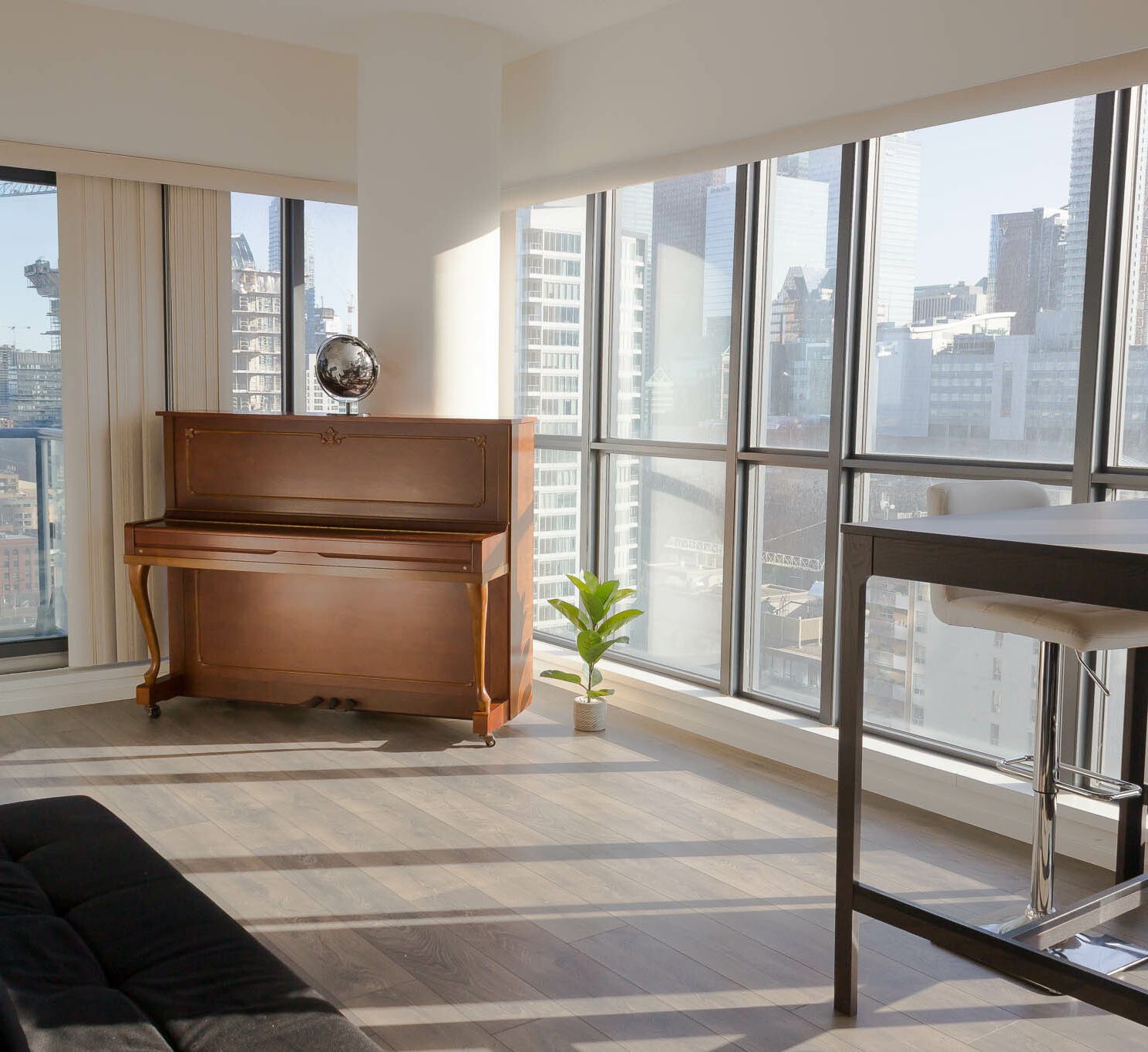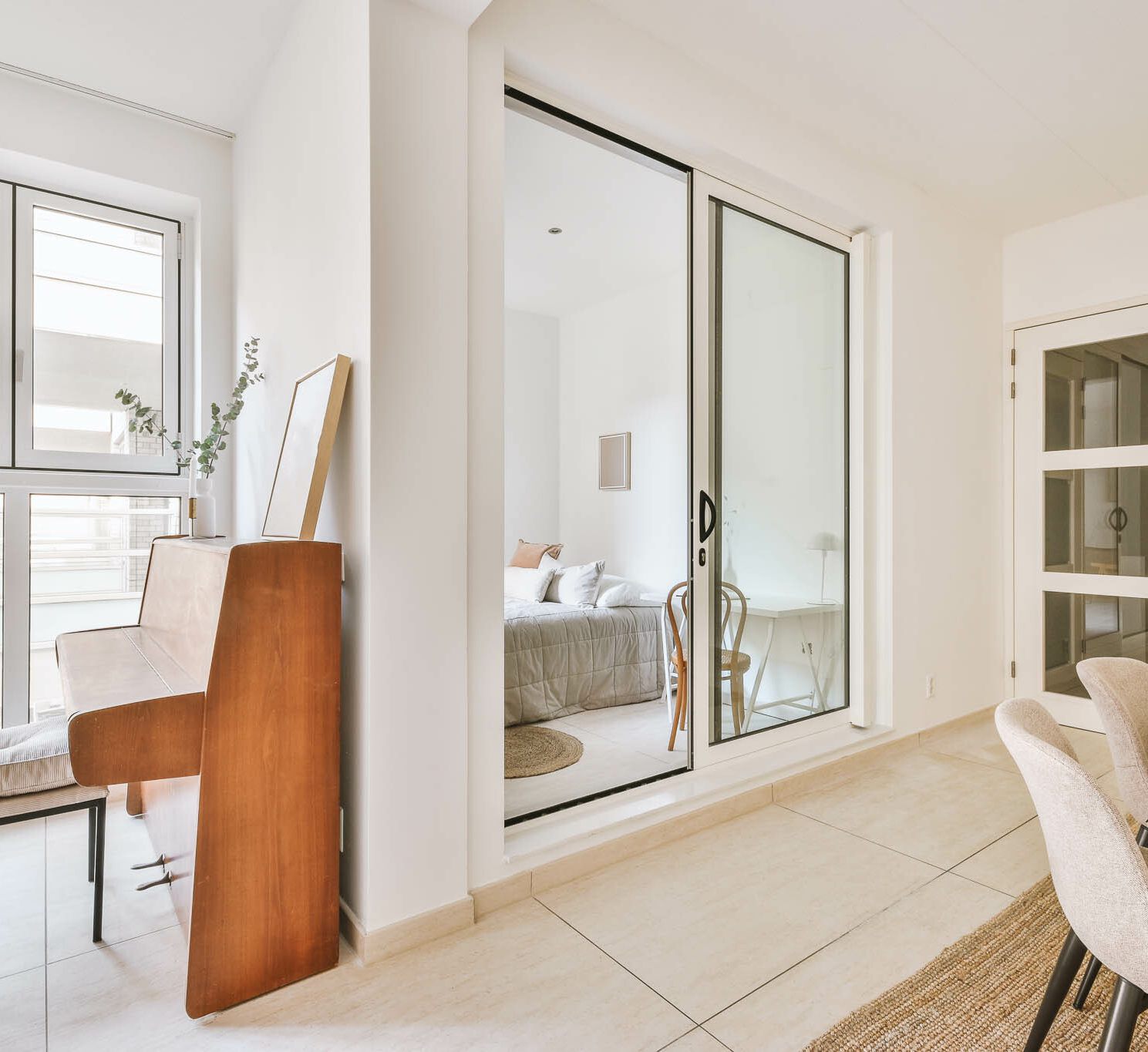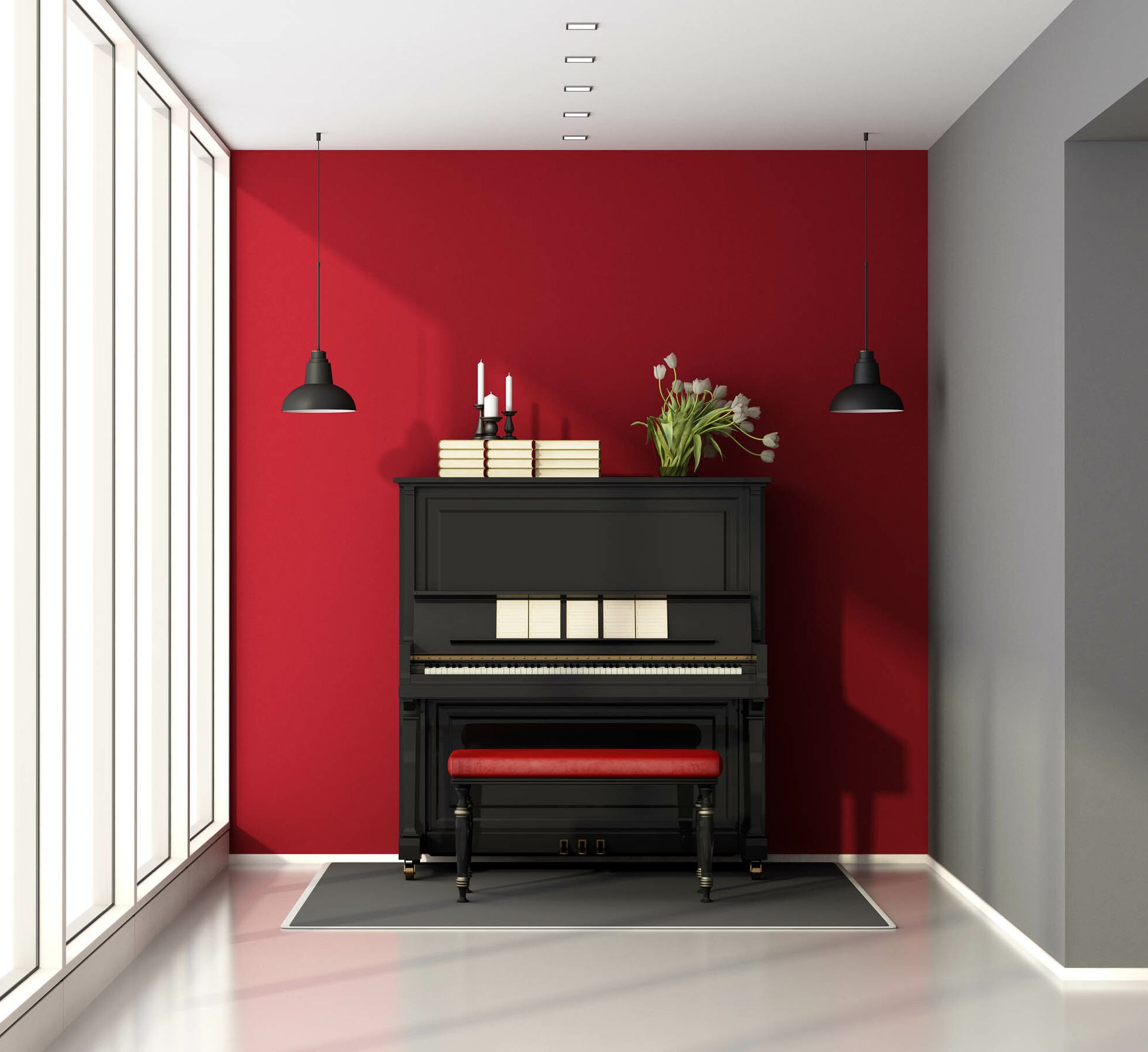Where should I keep my acoustic piano?
4th September 2023
Categories: Acoustic
We all want to get the best sound out of our piano no matter what kind of space we have to put it in. The available space we have can always be adapted to get the most out of our instrument! Perhaps you have multiple spaces in which you could potentially place your piano. Whatever situation you face, there are a few important things to consider when creating the best acoustic environment for your piano.

Piano size
Firstly, consider the type of piano you own! Is it a grand or upright piano? Most of us know that these pianos come in a range of sizes from concert grands, baby grands through to taller upright pianos of 130cm and smaller pianos around 110cm in height. You will most likely want to adapt and organise a room according the size of your piano as the sound projection will vary. A grand piano in a small room packed with furniture will mostly likely lead to a dampened sound. On the other hand, a grand piano in a small but empty room, may reverberate more, but could become overpowering when played to its full potential!
Smaller Pianos
Smaller upright pianos may not have as fuller sound as expected when played in a room as large as our showroom. However, when placed in a smaller sized room, these upright pianos can fill the room with their rich tone! Traditionally, upright pianos are mostly placed with the straight edge along the wall. Alternatively, you could pull the piano a few inches away from the wall to maximise the sound that mostly comes from the back of the piano where the soundboard is located. Of course, if the piano is a bit too loud, placing it closer to the wall will help soak up excess sound! If you can't do much about the furniture in the room and find that your upright piano isn't projecting the sound as much as you had hoped, having a lid prop installed will allow more sound to ring out from the piano.

Acoustics
Piano room acoustics will be affected by the type of floor and walls that surround the piano. If you are able to choose between a carpeted room or a room with a wooden or tiled floor, consider the fact that the carpeted room will absorb more of the sound from the piano. Therefore, you may want to have less furniture in a carpeted room, especially if you have a smaller upright piano that has a quieter sound.
However, if you feel that the piano sounds too loud, consider hanging up curtains or placing a rug under the front of the piano to absorb reflected sound and to add more depth to the bass. A room with a tiled or wooden floor will most likely need to be adapted in this way if it accommodates a grand piano or upright piano with a large cabinet.
A piano with a warm or mellow tone may sound ok in a room with solid floors, but you may need to dampen the sound of the room if the piano has a particularly bright tone. Installing acoustic panels and noise dampeners could also help reduce echo and harshness of sound in large empty rooms with brighter and louder pianos.

Room design
Air vents, skylights, high ceilings, narrow corridors, arches and beams-may also be detrimental to the sound quality. If you have a room without these features, this could be a better place the put your piano. It is best to find a room that can easily be closed off from other rooms so that the sound can be contained within the room.
If you are hoping to perform to people in the same room that you keep your piano, remember how every person in the audience will be soaking up the sound from your piano! Maybe you will want to take a few objects out of the room if performing to an audience will significantly reduce the reverberation of sound in the room.




Precautions
Finally, don't forget to examine the room for potential threats to your piano's durability. It's advisable to keep your piano away from radiators and underfloor heating to avoid damaging the piano. A room with a fairly consistent temperature of around 20 degrees, not too hot or cold, is the best environment for a piano. This means it's best to keep pianos away from air vents, windows and conservatories as these are areas where the temperature may fluctuate. Placing the straight edge of an upright piano against the inner wall of a room is the ideal place.
If possible, keep your piano away from direct sunlight so that the keys and finish do not discolour and fade. Too much heat exposure can damage the piano and quickly affect tuning. If this isn't possible, purchase a piano cover to protect the instrument from being exposed to heat and light variations. Climate control systems can also be installed into your piano if the room is susceptible to dramatic temperature change. A dehumidifier could help stabilise the humidity to around 45-60 percent if humidity is an issue.
If you are particularly precious about your floor, consider investing in caster cups that go over the wheels on your piano to prevent damage to the floor. It is best that your piano is not in an open plan kitchen area as it could absorb moisture and heat from cooking elements. You don't want to end up with slow hammers or swelling!

Final points!
Overall, how you create the best acoustic environment for your piano mostly depends on the type of acoustics you need to make the most out the style of music you play. If you want the sound to reverberate as much as possible, then choose a room without a carpet and place your piano on a solid floor. If you feel there is too much reverberation, consider hanging curtains and gradually adding furniture to the room until the sound feels right for you.
If you are not sure whether a piano will suit the acoustics and room size you have available, Broughton Pianos offers the option to rent a piano before buying one! This gives you plenty of time to work out whether the piano is suitable for you and to find the best place to keep it in your home, studio or wherever else you are planning to keep your piano. If temperature fluctuations are an issue, you can always consider pianos from our digital range as these are less likely to be affected.



